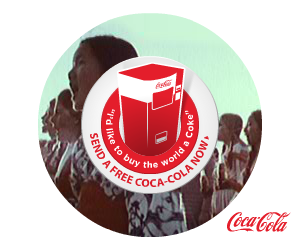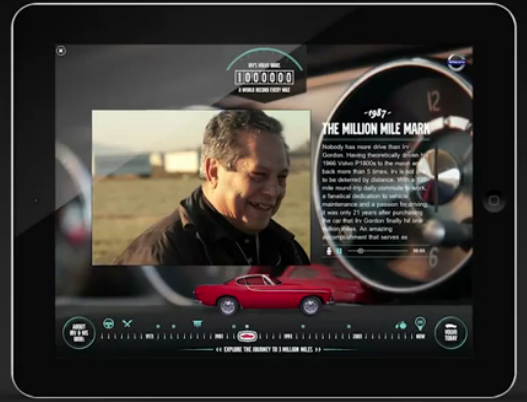Mad Men (And Women) Get Introduced To The Digital Ad Age In Google Trade Effort
The ads are classics: Coca-Cola’s Vietnam-era “Hilltop” ad, where a chorus sang of wanting to buy the world a Coke; Volvo’s introduction to the U.S. with an ad that invited people to “Drive It Like You Hate It,”; Alka Seltzer’s “I can’t believe I ate the whole thing”; and Avis’s “We Try Harder” spot — […]
The ads are classics: Coca-Cola’s Vietnam-era “Hilltop” ad, where a chorus sang of wanting to buy the world a Coke; Volvo’s introduction to the U.S. with an ad that invited people to “Drive It Like You Hate It,”; Alka Seltzer’s “I can’t believe I ate the whole thing”; and Avis’s “We Try Harder” spot — a TV ad that later became the company’s slogan. Even now, decades after they aired, folks in the ad biz remember these iconic campaigns and long to achieve anything approaching their impact on the culture.
Anyone in today’s interactive advertising business has surely wondered whether it’s possible to have as much of an impact when people’s attention is divided between different devices, hundreds of TV channels and millions of websites. Add to that the small sizes of many interactive ads, and the challenge becomes even greater. Only Old Spice’s recent multi-channel campaign, which introduced the phrase “I’m on a horse!” to the vernacular, begins to approach the cultural relevance of some of these classic TV creatives.
Not Just Engineering And Algorithms
Google has apparently been wondering about this, too, and, to that end, today unveiled what it’s calling “Project Re:Brief,” which brings out of retirement the creative minds that came up with the ’60s and ’70s-era TV ads described above, pairs them with interactive ad professionals familiar with the latest technologies, and sees what they come up with. The teams were to examine the original creative brief and use today’s interactive ad capabilities to achieve the results the clients’ originally wanted to realize.
The effort is a trade marketing campaign for Google, of course, and gives the company a chance to show off what can be done with Google’s vast reach and technology. It also highlights Google’s creative capabilities — trying to prove that it’s not all about engineering and algorithms.
Eighteen Years On, Interactive Ads Fall Short
But it also highlights a real issue in the industry. As Google’s website for the project explains: “This year, Internet advertising turns 18-years-old. And yet despite almost two decades of innovation online, digital ads are still being used to simply inform more than they’re being used to connect, engage and entertain. So we designed this experiment to re-imagine what advertising can be and push the boundaries of how creative ideas and our technology can work hand in hand.”
Google is documenting the project both on its website and via a documentary directed by Doug Pray, and created by the same team who joined him to make the Emmy-Award-winning film and PBS hit about the ad industry “Art & Copy.” The Re:Brief project comes as the SXSW interactive conference starts, giving Google a chance to introduce it in person to many decision-makers. The company will talk about the project in a presentation on Sunday and is showing off demos at the “Google Village” space.
The Re-Imagining Of Classics
So far, Google had revealed two updates to the classic ads. In the Coca-Cola example, the original art director, Harvey Gabor, helped conceive an ad in which people are literally able to buy other people, around the world, a Coke. Using the interactive capabilities of the expandable medium rectangle itself, users are able to record a video and a message and select where they want to send the drink — to special vending machines in Buenos Aires, Argentina; Capetown, South Africa; New York, NY; and Mountain View, Calif.
Once the person on the receiving end gets the Coke at the vending machine, he or she can record a video reply, which can also be accessed via the interactive ad. Google’s technology is used to translate and closed-caption each video, so the message can be understood around the world. The new ads came in both desktop and mobile versions.
For Volvo, the original idea was to communicate the reliability and durability of the Volvo brand. In the modern re-imagining of the work by art director Amil Gargano, the ads center on the durability of one particular Volvo which, to date, has clocked a word-record 2.9 million miles. The car, owned by Irv Gordon since 1966, follows Gordon on his journey to take the car to 3 million miles. The video-centric ads, which also use a live feed of the car’s odometer, tell stories from his past. Users can also interact with Gordon through Google+ and explore an immersive tablet version of the ad.
For advertising aficionados, the most interesting part of this effort may be the “behind the scenes” videos, in which Mad Men-era oldtimers are introduced to the latest ad technologies at Google’s New York City offices. Harvey Gabor, at one point, says “All I know of Google is the search engine. I use it mostly for email and to look up all my aches and pains and what disease I think I probably have and am going to die from.” He later says that, to him, it appeared that a banner ad could be completed in a morning. These videos depict the brainstorming process as well as the client presentations, in which the old timers show they’ve definitely still got it.
“It was Marshall McCluhan who said the medium is the message,” opines Amil Gargano, “and I say, no, the message is the message. No matter what medium you’re in, think about content. Content is what matters.”
Related stories


